Framework Proposed to Improve Child Health Services in CT
/The time is right to embrace a new way of funding, organizing, and delivering child health services, as states reform payment and delivery systems
Read MoreThe time is right to embrace a new way of funding, organizing, and delivering child health services, as states reform payment and delivery systems
Read MoreThe New Haven Free Public Library (NHFPL) is among the 30 finalists nationwide for the 2019 National Medal for Museum and Library Service, presented by the Institute of Museum and Library Services.
The National Medal is the nation’s highest honor given to museums and libraries for service to their communities. For 25 years, the award has celebrated institutions that demonstrate extraordinary and innovative approaches to public service and are making a difference for individuals, families, and communities.
“The 30 National Medal finalists showcase the tremendous ability of libraries and museums to serve as vital community resources,” said IMLS Director Dr. Kathryn K. Matthew. “The Institute of Museum and Library Services is honored to recognize these leading institutions. We congratulate them on the work they are doing across the United States.”
The New Haven Free Public Library welcomes more than 500,000 library users through its doors each year, realizing its mission of fostering lifelong learning, inspiring curiosity, and building community through shared access to resources, experiences, and opportunities for all. Open to all, the New Haven Free Public Library is described as a “community pillar of learning, exploration and inspiration.”
“We are honored that the New Haven Free Public Library is a finalist for the National Medal for Museum and Library Service, and appreciate the inaugural nomination by U.S. Senator Christopher Murphy,” said City Librarian Martha Brogan. “We proudly share this nomination as recognition of our home, the community and the City of New Haven.”
“I nominated the New Haven Free Public Library for this award because of their unmatched commitment to serving the New Haven community. NHFPL has gone above and beyond to offer innovative 21st Century programm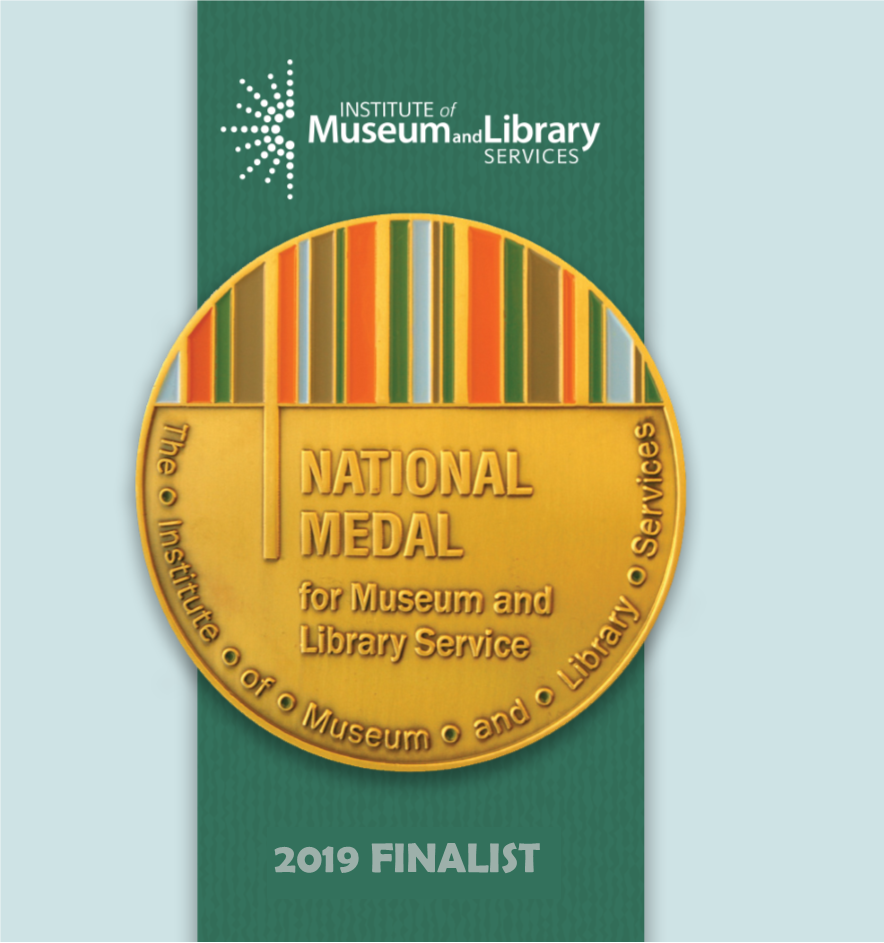 ing to fit the diverse needs of New Haven residents. I’m so excited the IMLS is recognizing and celebrating their great work,” said Murphy.
ing to fit the diverse needs of New Haven residents. I’m so excited the IMLS is recognizing and celebrating their great work,” said Murphy.
Finalists are chosen because of their significant and exceptional contributions to their communities. Each year, five museums and five libraries are awarded for their exceptional contributions to their communities. Representatives from winning institutions will be honored for their extraordinary contributions at the National Medal Ceremony on June 12 in Washington, D.C. The Institute of Museum and Library Services is the primary source of federal support for the nation's libraries and museums.
Brogan added: “Our application emphasized the civic-minded fighting spirit of our founders which continues to this day, our training with EXCITE Transformation for Libraries – originally funded by IMLS in a grant to the CT State Library – and our new Strategic Framework, along with highlights of a few of our exemplary programs and partnerships including READy for the Grade, Long Wharf Theatre, and Ives Squared anchor role in the Elm City Innovation Collaborative.”
IMLS is encouraging community members who have visited the New Haven Free Public Library to share their story on social media. To #ShareYourStory, please visit www.facebook.com/USIMLS or www.twitter.com/us_imls and use #IMLSmedals and #myNHFPLstory.
John Hickenlooper, a former two-term Governor of Colorado, Mayor of Denver and 1974 graduate of Wesleyan University in Middletown, is the latest Democrat to announce he will be seeking the party’s presidential nomination in the 2020 election cycle.
Hickenlooper, 67, is expected to point to his eight years governing Colorado, a modern-day political swing state with an electorate nearly evenly divided among registered Democrats, Republicans and unaffiliated voters, the Denver Post reported this week.
In addition to leading the state during an explosive economic expansion following the Great Recession, Hickenlooper nudged the state to the left, the Post reported. By the time his second term ended in January, he had expanded the state’s Medicaid program, signed comprehensive gun-control legislation and helped establish civil unions for same-sex couples prior to the U.S. Supreme Court legalizing marriage equality.
“I’m running for president because we’re facing a crisis that threatens everything we stand for,” Hickenlooper says in a taped announcement, promising to “repair the damage done to our country and be stronger than ever.” He will kick-off his campaign at a rally Thursday in Denver.
Hickenlooper graduated from Wesleyan University with a bachelor’s degree in English and a master’s degree in geology. He began his career as a geologist and later opened a series of restaurants and brewpubs across the country, including the Wynkoop Brewing Co. in downtown Denver, which helped spark the revitalization of the city’s now-thriving Lower Downtown (“LoDo”) district. He served as the mayor of Denver from 2003 to 2011.
Hickenlooper delivered the commencement address at Wesleyan in 2010, where he said “Frankness impels me to say that my Wesleyan undergraduate career was notable, which is not to say distinguished. I came to Wesleyan as a slightly dyslexic extrovert with attention deficit disorders. And don’t you think that’s a particularly cruel irony – that the slowest readers could also have the short attention spans?”
On a more serious note, he explained that “in spite of the fact that my degrees are in English and geology – what I learned at Wesleyan was how to be an entrepreneur. The essence of entrepreneurship is not just the economic bottom-line so much as it is an exploration of innovation and creativity.
It’s the creative spark that has always interested me most, because there is such joy and satisfaction in the process of creating something that works, that fills a need, building something where nothing existed before, adding value to people’s lives so that their creative energies can also flourish.”
Reflecting on his time as Mayor, he said “I like to refer to myself, because the word ‘politician’ is still somewhat tainted despite our efforts, as an entrepreneur on loan to Public Service.”
Hickenlooper described a start-up as “the single best learning process in American enterprise. When you build something from scratch, you acquire a depth of understanding that no ‘professional,’ no management expert can match. There are few better ways to learn about yourself, your strengths and your weaknesses, than in beginning and building something, an enterprise. It is a wonderful mirror.”
“Entrepreneurship,’ he added, “is all about innovation, re-invention, adaptation and perseverance.”
A past chair of the National Governor’s Association, he was guest on the weekly podcast hosted by the leaders of Middletown-based Community Health Center a year ago, discussing how expanded coverage under the Affordable Care Act has improved access to health care in his state, how embedding behavioral health in primary care is improving outcomes, lessons learned from the state’s marijuana legalization, and how the opioid crisis was being combated in Colorado.
His Wesleyan commencement address at the start of this decade included this description of his years as Mayor: “We challenged the status quo that government can’t work. We were transparent and accountable. We sought talent, without regard to politics, whether someone was Republican or Democrat. We weren’t bi-partisan, we were non-partisan. Every good restaurateur learns early that there’s no margin, there’s no profit in having enemies. You need everyone. We were always about solving problems, and you can’t solve problems with only half the people.”
https://youtu.be/QwIk0hUmzk8
The number of pedestrian deaths in Connecticut in the first half of 2018 jumped by 53 percent compared to the same period the previous year, according to preliminary data released by the Governor’s Highway Safety Association.
There were 29 pedestrian deaths between January and June in Connecticut in 2018, compared with 19 between January and June 2017. Based on population, Connecticut’s fatality rate was 16th among the states.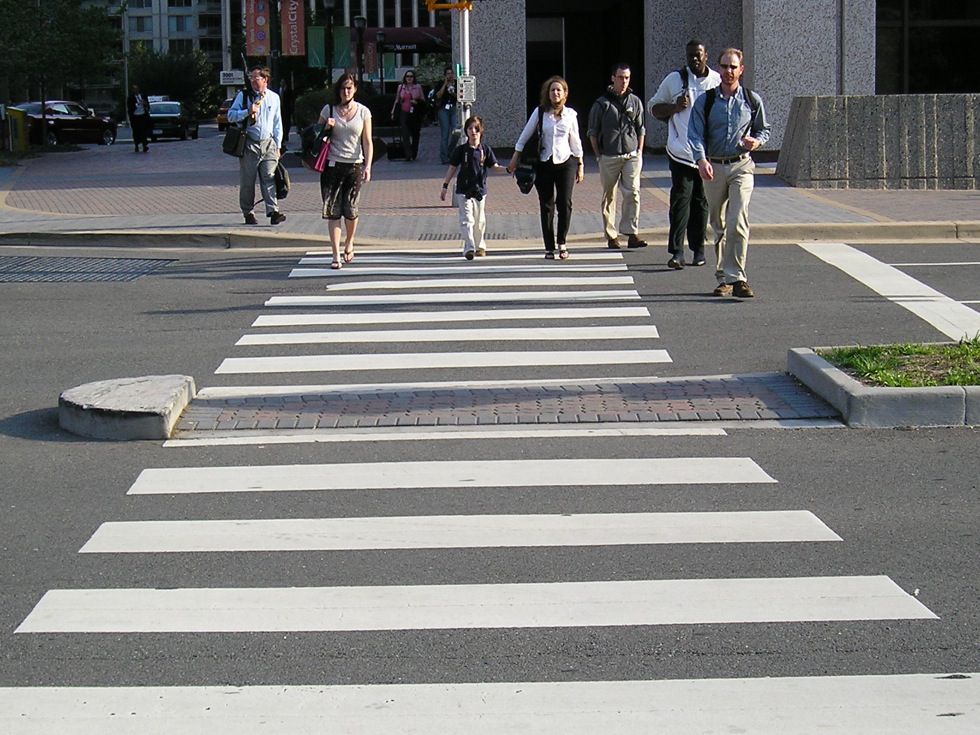
Nationwide, there was a 3 percent increases, as the number of pedestrian deaths climbed from 2,790 to 2,876 during the six month periods. Five states (Arizona, California, Florida, Georgia, and Texas) accounted for almost half — 46 percent — of all pedestrian deaths during the first six months of 2018.
Overall, pedestrian fatalities during the first half of 2018 declined in 23 states compared with the same period in 2017. Six states (Alabama, Indiana, Michigan, Nevada, Oklahoma and Wisconsin) reported double-digit declines in both the number and percent change in pedestrian fatalities from the same period in 2017. Three states (Iowa, New Hampshire and Utah) reported two consecutive years of declining numbers of pedestrian fatalities.
During the 10-year period of 2008 to 2017, according to the National Highway traffic Safety Administration, the number of pedestrian fatalities in the U.S. increased by 35 percent, from 4,414 deaths in 2008 to 5,977 deaths in 2017. This translates into more than 1,500 additional pedestrian deaths in 2017 compared with 2008. At the same time that pedestrian deaths have been increasing, the number of all other traffic deaths combined decreased by six percent.
In its review of state efforts to promote pedestrian safety, an initiative in Connecticut is highlighted: “Connecticut introduced the “Watch for Me CT” campaign, which is a statewide educational community outreach campaign involving media components and community engagement in partnership with CT Children’s Medical Center.” A statewide signage project was recently completed to ensure pedestrian signage was up to date with current standards, including near schools and bus stops, the report states, indicating that “every state is addressing pedestrian safety using a combination of engineering, education and enforcement.”
In addition, the GHSA report indicates that nationwide “about 75 percent of pedestrian fatalities occur after dark, and increases in pedestrian fatalities are occurring largely at night. From 2008 to 2017 the number of nighttime pedestrian fatalities increased by 45 percent, compared to a much smaller, 11 percent increase in daytime pedestrian fatalities.”
The change in the prevalence of various vehicle-types on the road is also noted, with the report pointing out that pedestrians struck by a large SUV are twice as likely to die as those struck by car.
The Hartford Foundation for Public Giving, the community foundation for 29 communities in Greater Hartford, awarded more than $38 million in grants to the region’s nonprofit agencies and educational institutions in 2018.
“At a time when our state and many of our communities face significant fiscal challenges, the Hartford Foundation was able to award a record breaking number of grants this past year,” said Hartford Foundation president Jay Williams. “We continue to look for ways to work together with our donors, nonprofits, and community partners to ensure Greater Hartford residents have access to opportunities that enrich their lives and secure a better future for our region.”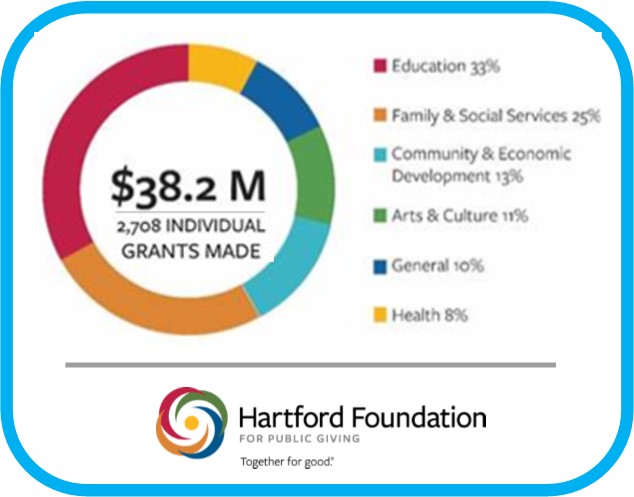
According to the latest estimated, unaudited numbers, the Foundation ended 2018 with total assets of $933 million in 1,230 funds. The Foundation received gifts totaling $13.1 million and opened 22 new funds.
“Greater Hartford is fortunate to have so many generous residents who truly want to make a lasting difference in their community,” Williams said. “The historic amount of resources we have been able to provide to hardworking and dedicated nonprofit organizations is a testament to our donors’ level of commitment to the region and the work the Hartford Foundation supports.”
Officials noted that the Foundation’s 2018 grantmaking - with a total of 2,708 individual grants made - was based on the recognition that "a vibrant and strong Greater Hartford region requires that all residents, especially those with the greatest need, have equitable access to opportunities to achieve and flourish." The largest percentage of grants were in education (33%), followed by family & social services (25%), communication and economic development (13%), and arts & culture (11%).
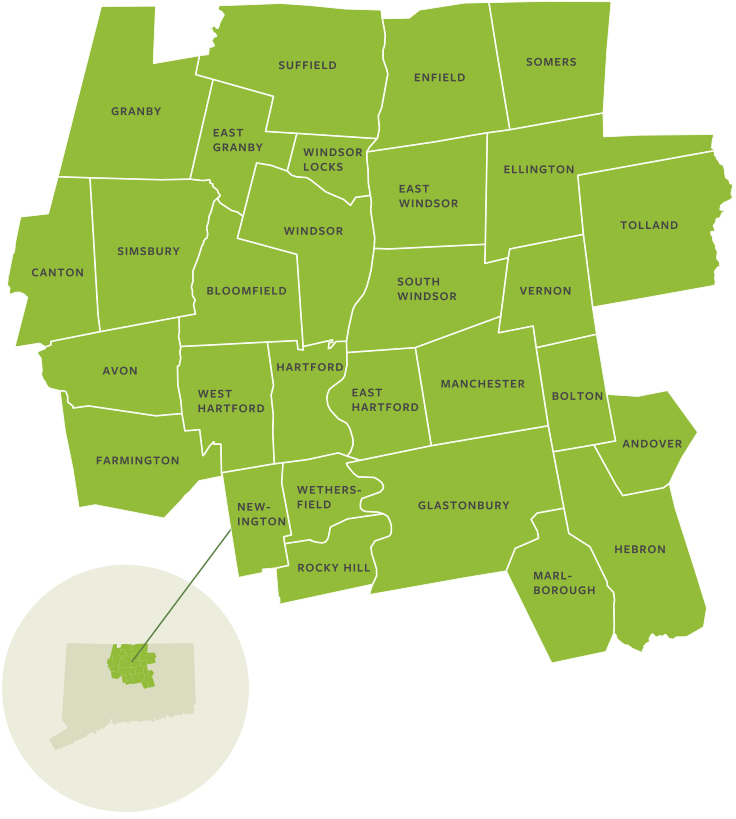 Among the grants, in each program area:
Among the grants, in each program area:
Education
Family and Social Services
Community and Economic Development
Arts and Culture
Health
Nonprofit Capacity Building
Since its founding in 1925, the Foundation has awarded more than $758 million in grants.
Little known by most people - regardless of race - until recently, the Green Book has recently exploded into the public consciousness.
Described as "the essential travel guide for a segregated America," within just the past two days a popular movie by that name won the Academy Award for best picture, and a documentary relating the story of real people and places that inspired the popular motion picture debuted on the Smithsonian Channel.
The documentary, "The Green Book: Guide to Freedom," was shown at a special preview at the Wadsworth Atheneum in Hartford, in a showing coordinated by the Amistad Center for Art and Culture, Comcast, and the Smithsonian Channel. It marked the third year that Comcast has joined with the Amistad Center and Smithsonian Channel to bring a special presentation to Hartford during Black History month.
Nearly 100 people were on hand for the local premiere of the documentary, which was followed by a panel discussion including Kelli Herod, Vice President of Post Production at Smithsonian Channel, and Stacey Close, Associate Vice President for Equity and Diversity at Eastern Connecticut State University, moderated by Kara Sundlun of WFSB. Amistad Center Executive Director & Curator at Large Wm. Frank Mitchell, Brad Palazzo, Comcast Director of Community Impact and Hartford Mayor Luke Bronin also spoke briefly, with Bronin saluting the "resiliance, ingenuity and determination" of those who traveled through dangerous times.
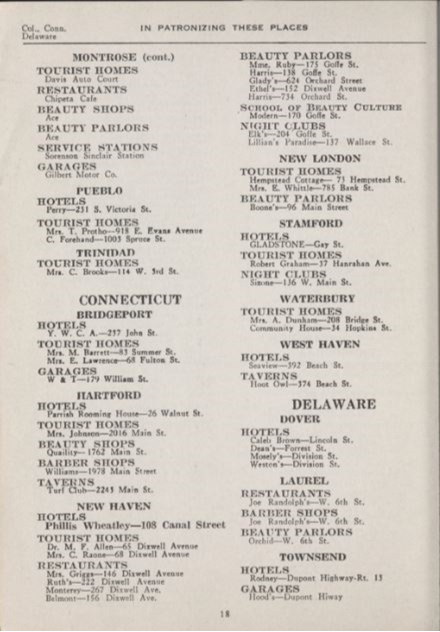 The documentary was produced by award-winning filmmaker Yoruba Richen. It premieres this week on Smithsonian Channel, telling the story of the Green Book, launched in the 1930's by Victor Green, a black postal carrier from Harlem who created a volume that was "part travel guide and part survival guide." It helped African-Americans navigate safe passage across a dangerously segregated nation, identifying towns, hotels, restaurants and businesses that would be hospitable to African-Americans, sometimes few and far between.
The documentary was produced by award-winning filmmaker Yoruba Richen. It premieres this week on Smithsonian Channel, telling the story of the Green Book, launched in the 1930's by Victor Green, a black postal carrier from Harlem who created a volume that was "part travel guide and part survival guide." It helped African-Americans navigate safe passage across a dangerously segregated nation, identifying towns, hotels, restaurants and businesses that would be hospitable to African-Americans, sometimes few and far between.
The challenges were not only in the South. In fact, a page in the 1948 Green Book, lists locations in Connecticut - and the list does not fill the page. The locations were in Bridgeport, Hartford, New Haven, New London, Stamford, Waterbury and West Haven. Included are restaurants, hotels, tourist homes, beauty parlors, barber shops, and night clubs. The 1967 edition also includes five Hartford locations, including one - the former Bond Hotel - that is still standing to this day.
"We are proud to tell the true story behind this remarkable guide and to shine new light on this disturbing yet important period in Amerian history," said David Royle, Smithsonian Channel's Chief Programming officer.
The documentary tells the story of the rise of the African American middle class in Detroit, and the iconic A.G. Gaston Motel in Birmingham, Alabama - a pivotal location in the civil rights movement. It also recalls that during its 1950s heyday, the Idlewild Resort in Michigan was a magnet for black culture and entertainment, with a booming nightlife featuring famous performers like Louis Armstrong, Sarah Vaughan and Dinah Washington. In the Q&A in Hartford following the advance showing, one audience member recalled her family owning property at the Idlewild - a local connection that the panel did not expect, but was clearly pleased to learn.
"At Comcast NBC Universal diversity and inclusion is a fundamental part of our company culture and are crucial components to all of our efforts to create and deliver the best and boldest technology and entertainment for our customers," noted Palazzo. "The Green Book: Guide to Freedom screening is another way for us to bring diverse entertainment and story-telling locally to Hartford-area residents." Comcast, with Connecticut offices in Berlin, has partnered with the Amistad on a number of initiatives over the years and "are proud to play a small role in helping them to tell their cultural story."
The Amistad Center for Art & Culture, located in the Wadsworth Atheneum, celebrates art and culture influenced by people of African descent through education, scholarship and social experiences.
Victor Green looked forward to the day people wouldn't need the Green Book. In the 1949 edition he wrote,
There will be a day sometime in the near future when this guide will not have to be published. That is when we as a race will have equal opportunities and privileges in the United States. It will be a great day for us to suspend this publication for then we can go wherever we please, and without embarrassment. But until that time comes we shall continue to publish this information for your convenience each year.
The year the Civil Rights Act passed, in 1964, was the Green Book’s last. As the panelists in Hartford noted, more than 50 years later, the struggle for equality continues.
There were 15,278 international students enrolled at Connecticut collegiate institutions during the 2017-18 academic year, which represents an increase of 4 percent over the previous year and a 63 percent increase since 2012.
In academic year 2017-18, Connecticut ranked second in New England and 24th in the U.S. in international student enrollment, according to the 2018 Open Doors report released by the nonprofit Institute of International Education (IIE) and the U.S. Department of State’s Bureau of Educational and Cultural Affairs (ECA).
Between AY 2012-13 and AY 2017-18, Yale University and the University of Connecticut took the top spots as the universities with the largest share of international students in Connecticut.
International students represent a big economic injection for New England, the report points out. In academic year 2017-18, international students contributed $39.4 billion to the overall U.S. economy, with $4.2 billion added to the New England economy alone. Between 2012 and 2018, international students contributed a total of $21.3 billion to the New England economy. Foreign students contributed an estimated $584 million to Connecticut’s economy in the past year, according to the report, which was highlighted recently by the New England Board of Higher Education.
The number of international students in New England has increased every year since 2012 and the region’s growth on this measure now outpaces the nation. In the 2017-18 academic year, the region enrolled 6.3 percent more international students than the previous academic year (AY). This figure compares to a national increase of only 1.5 percent during the same period.
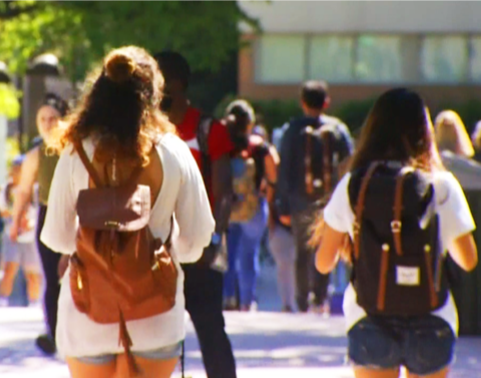 Both public and private nonprofit institutions in New England saw a 61 percent rise in the number of foreign students over a five-year period from AY 2012-13 to AY 2017-18, which is comparable to the national growth in the international student population over the same period.
Both public and private nonprofit institutions in New England saw a 61 percent rise in the number of foreign students over a five-year period from AY 2012-13 to AY 2017-18, which is comparable to the national growth in the international student population over the same period.
International students have helped forestall a nationwide enrollment crisis. The total higher education population in the U.S. topped out in 2010 at about 21 million students and has been slowly declining since then. The decline in New England is especially acute. This has been countered to some extent by growth of the foreign student population, coupled with a rise in online enrollment, which together comprise almost a quarter of the nation’s students.
The data indicates that there were 9,350 international students enrolled in Connecticut colleges and universities in 2012; 14,711 in 2017 and 15,278 in 2018. The number of international students increased from 2017 to 2018 in every New England state with the exception of New Hampshire, which saw a slight decrease. Only Massachusetts has more international students than Connecticut, among the six New England states.
Eight states - including Connecticut - have launched projects aiming to provide opportunities for people who experience occupational or non-occupational injuries or illnesses to remain in and return to the workforce. After a competitive selection process, the U.S. Department of Labor’s Office of Disability Employment Policy in partnership with DOL’s Employment and Training Administration and the Social Security Administration awarded eight states with funding for RETAIN Demonstration Projects.
Connecticut’s request was $2.1 million. Phase one of the project will be in the Capitol Region; the intention is to then expand to other regions of the state in phase two. Each state created a leadership team comprised of representatives from state health services, state workforce development, and other public and private stakeholders. The team will work to foster collaboration between health care providers and employers to assist injured or ill workers in remaining in the workforce.
Health care partner on the Connecticut pilot initiative is the University of Connecticut Health Center and the insurer is The Hartford. The state Department of Labor’s Office of Workforce Competitiveness is leading the team, along with representatives of Capital Workforce Partners, The Hartford, UConn Health, the state Department of Rehabilitation Services, and the CT Business Leadership network.
In addition to Connecticut, the states of California, Kansas, Kentucky, Minnesota, Ohio, Vermont and Washington received awards. While each has the same mission, the projects are adaptable to specific state needs. The goal of RETAIN, or Retaining Employment and Talent after Injury/Illness Network, Demonstration Projects is to test the impact of early intervention strategies that improve stay-at-work/return-to-work outcomes, according to the U.S. Department of Labor, as reported by the Council of State Governments (CSG).
Stay-at-work/return-to-work initiatives provide timely and effective supports and services that allow employees to remain in the workforce and avoid long-term unemployment. Keeping people engaged in the workplace benefits all stakeholders including the employee, employer and state, officials point out. States hope to reduce long-term work disability and the need for Social Security Disability Insurance through the projects.
The projects will be funded in two phases. The eight states mentioned above were funded for the 18-month Phase 1 pilot project. After Phase 1, a subset of the recipients will competitively apply for Phase 2 funding. Phase 2 will include a 30-month project implementation and a 12-month evaluation.
Providing supports and services for people who have acquired occupational or non-occupational injuries or illnesses strengthens their quality of life, allows businesses to prosper, and stimulates state economies, officials noted.
Housatonic Community College's advancements in the areas of efficiency and effectiveness were recognized by the Community College Futures Assembly, which recently named the College's Family Economic Security Program (FESP) as a finalist for its national 2019 Bellwether Award.
"It is an honor to be among the finalists for this prestigious award. We're excited to compete and share the program with other colleges because it is really helping our students," said Alese Mulvihill, Associate Dean of Student Success at Housatonic Community College (HCC). "Our hope is that other schools will institute FESP in their own communities and get the same results we're seeing."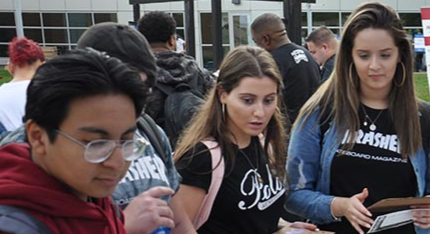
The FESP program provides bundled services to HCC students of low to moderate income, whereby students receive resources and tools to advance their education, career and economic security. Achievement coaches provide academic, financial and life counseling, career coordinators provide career counseling, and students participate in workshops and activities.
The high-touch program was adopted from the Center for Working Families model from the Annie E. Casey Foundation, and is an innovative partnership between HCC, Fairfield County's Community Foundation Fund for Women and Girls, and the Housatonic Community College Foundation.
As part of the Bellweather Awards process, the awards application must identify the issue or challenge that the leading edge program or activity was designed to address, describe the process, timeline, participants, and resources required to implement the program or activity, specify the results and/or impact, and elaborate on lessons learned for colleges considering a replication of the initiative.
Now in its fourth year, the FESP program is a model for student success, with retention rates for FESP students a full 30 percent higher than those of the College.
"FESP is a perfect example of the power of partnerships to transform services for students," said Dr. Paul Broadie, HCC President. "Through these collaborations, the program increases graduation rates, leading to greater employment opportunities, increased earnings, and the economic expansion of surrounding communities. The impact is tremendous."
Bellwether College Consortium through the Community College Futures Assembly addresses the best practices at community colleges. Thirty finalist colleges in three categories were competitively chosen by a national panel of judges to compete for the coveted award. The selection process culminates with the winning program initiatives to be announced this month.
"The Fund for Women & Girls designed FESP to address the academic achievement gap among Fairfield County's low-income women and simultaneously promote their economic advancement. FESP uses a proven model that yields higher graduation rates,” said Tricia Hyacinth, Director, Fairfield County's Community Foundation's Fund for Women & Girls. “We've seen firsthand how the program improves odds for women and their families.”
https://youtu.be/xFFkZb9RQjU
If you are looking for more evidence that manufacturing is back in Connecticut, you need look no further than Hartford and East Hartford. The Technology Labs Assistance Program (TLAP), just getting underway, was created as part of the Hartford/East Hartford Innovation Places Initiative, which is striving to make the area a more vibrant hub for innovation and entrepreneurship.
Hartford and East Hartford-based companies with less than 300 full-time employees in their Connecticut facilities are invited to apply to a new manufacturing assistance program that offers – among a dozen possibilities - 3D printing, engineering design and prototype development. Those chosen will receive a project subsidy of 50 percent off the total project cost, with subsidies reaching up to $10,000 annually.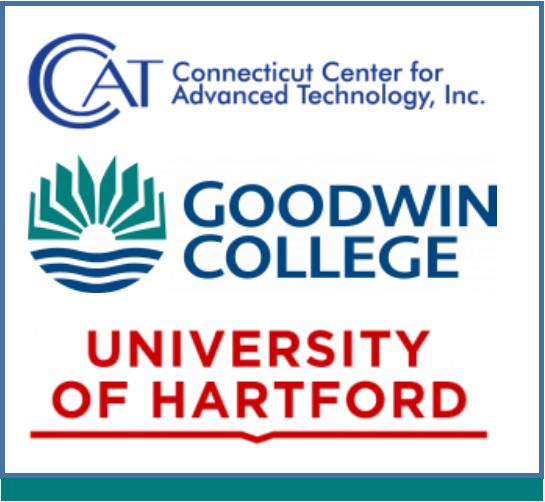
The innovation begins with the partners in the program. TLAP is designed to provide Connecticut entrepreneurs and businesses with easy access to the vast manufacturing resources and services available at various schools, universities and Advanced Manufacturing Centers in the Greater Hartford Area. Participating organizations currently include the University of Hartford, Goodwin College, and the Connecticut Center for Advanced Technology. Funding for the project subsidies is supported by CTNext.
“There’s a wide array of area companies who perform advanced tech work, but they might not have the machines or resources to, say, build a prototype, optimize a process or fabricate a complex part,” said Paul Striebel of the Connecticut Center for Advanced Technology (CCAT). Goodwin College, the University of Hartford and CCAT are part of an effort providing easy access to advanced resources and services available at their facilities.
“We are in a new era of interagency collaborations among state and private educational institutions and corporate partners,” said Cliff Thermer, Goodwin College’s Assistant Vice President for Strategy and Business Development and Department Chair for Business, Management, and Advanced Manufacturing. “The future of Connecticut innovation is bright.”
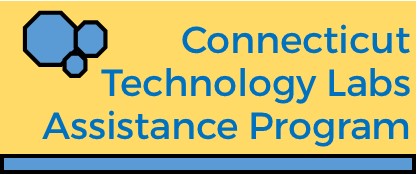 CCAT and the University of Hartford have a long history of working together developing programs, obtaining grant funding, sharing equipment and facilities, and ensuring that students have interesting research projects as well as hands-on learning opportunities through internships and experiential education. This is the latest program collaboration.
CCAT and the University of Hartford have a long history of working together developing programs, obtaining grant funding, sharing equipment and facilities, and ensuring that students have interesting research projects as well as hands-on learning opportunities through internships and experiential education. This is the latest program collaboration.
The Connecticut Center for Advanced Technology Inc. (CCAT), driving the program, is a dynamic and innovative applied technology organization that leads regional and national partnerships that assist global industrial companies and the manufacturing supply chain across industry sectors to drive advancements, efficiencies and adoption of leading edge technologies.
Project possibilities include – but are not limited to j- Engineering Design Services, Prototype Development, 3D Printing, Part Fabrication, Process Testing & Analysis, Technical assessments in conjunction with engineering projects and manufacturing challenges, Research to support proof of principle, Process Improvement, Commercialization Services, Tooling development and manufacture, Reverse Engineering and Inspection Services and Failure Analysis.


© 2024 Connecticut By The Numbers [TM]
430 New Park Avenue, Suite 102, West Hartford, CT 06110
Designed by RDK Design & Photography